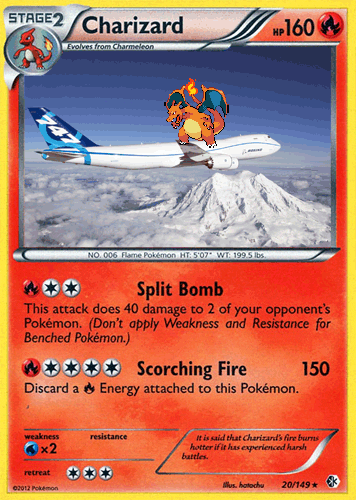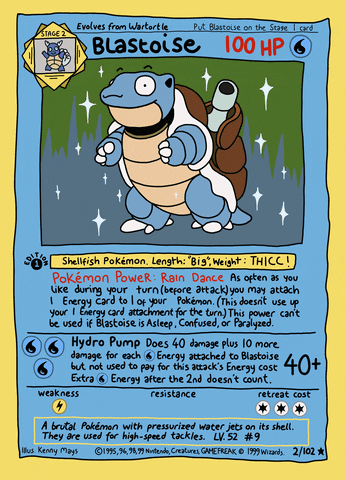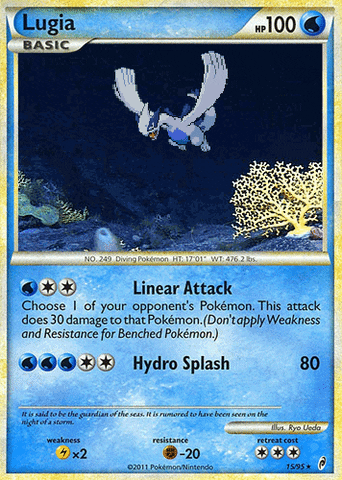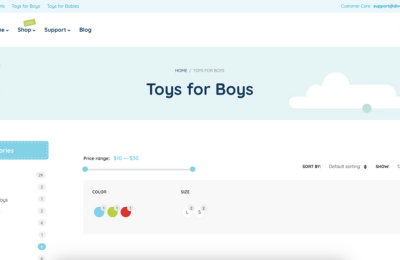
Introduction to Pokémon Cards
Are you ready to dive into the world of Pokémon trading cards? Brace yourself for a journey into the past that has made some collectors a fortune today! Pokémon cards are collectible items, first released in the 90s alongside the popular Pokémon video games. These are more than mere pieces of cardstock; they possess immense nostalgic, monetary, and gameplay value for enthusiasts across the globe. For instance, the Pikachu Illustrator card has fetched surprisingly high sums at numerous auctions.
Here’s a peek into the different aspects of the Pokémon card terrain:
- Understanding card rarity
- Identifying the most valuable cards
- Tracing the history of Pokémon cards
- Getting to grips with card trading
- Maintaining card value over time
- Engaging in Pokémon trading card games.

Criteria for Rarity and Value in Pokémon Cards
1. Release Date
Did you know that the release date of a Pokémon card can significantly impact its rarity and value? It’s a fascinating aspect of card collection, creating some unforeseen treasures. As you delve into the world of Pokémon card collecting, you’ll realize that older cards often have heightened value.
2. Rarity
Rarity Symbols depend on the card’s frequency – common (a black circle), uncommon (a black diamond), and rare (a black star).
- Special Variations: Such as holographic cards with a shiny foil illustration, or first edition cards that have unique characteristics.
- Card’s Condition and Popularity: High-valued Pokémon cards are in good condition and are popular amongst collectors.
- Printing Errors: Like the “No Rarity” symbol cards from Japan, lacking the commonly found rarity symbol.
Take, for example, the ultra-rare 1996 Japanese “No Rarity” Charizard, a star of the first print set missing its rarity symbol. These types are the highlight of any treasure hunt, proving difficult to find but rewarding to own.

3. Demand
Just like any collectible item, scarcity and the fervor of collectors determine their worth. Demand affects Pokémon cards’ value by escalating prices on rare cards sought after by collectors. High demand means a particular card is more sought after, driving intense competition among collectors. The higher the demand, the more enthusiasts are willing to pay, thus increasing the card’s value.
4. Supply
Supply is typically influenced by factors related to production, such as raw material availability and manufacturing capacity. In the case of Pokémon cards, unusual occurrences such as low ink levels can result in limited batches of certain cards. Remember, the simple rule of thumb – fewer in number, higher in value.
5. Condition of the Card
Engaging with a Pokémon card collection is both exciting and lucrative, especially when it comes to rarity and value. Believe it or not, the condition of the card can significantly impact these factors. Now, let’s discover how to assess that critical factor.
- Begin by closely checking the card for any wear and tear. Look out for any creases, scratches, or faded colors.
- Secondly, inspect the corners and edges. These areas should be sharp and not bent or worn out for the card to maintain its high value.
- Lastly, check the card’s surface under a light. It should maintain its original vibrancy and not show patches of uneven color.
6. Promotional Cards
Promotional Pokémon cards are truly a unique and valuable entity among card collectors. Their limited availability, exceptional features, and profound history make these cards highly sought after and priced.
- Promotional cards like the five Gold Star cards also require immense effort to acquire, like accumulating a high point threshold, amplifying their rarity and appeal.
- Exclusive features like the holographic back of the “Let’s Trade Please” promo card or the Pokémon staff member featured on Imakuni’s Doduo, contribute to their uniqueness and hence value.
Promotional cards are historically significant, like the Ishihara GX promo card celebrating the 60th birthday of The Pokémon Company’s president, Tsunekazu Ishihara. The extremely limited distribution among company staff made these cards exceedingly rare, with signed copies fetching an impressive $247,230 at auctions.
7. Signature Cards
As the name suggests, what sets these elusive cards apart is the addition of a signature, usually from a renowned artist or personality within the Pokémon universe. But the uniqueness doesn’t stop there.
A great example to rub elbows with is one rare beauty signed by no other than Mitsuhiro Arita, a legend in the world of Pokémon. Only 7 exist with a PSA 10 rating, making it an extremely rare find. What elevates its exclusivity is Arita’s autograph.

Top Rarest and Most Expensive Pokémon Cards Ever Sold
1. 2000 Pokémon Neo Genesis 1st Edition Holo Lugia #9
Remember the thrill of scoring a rare Pokémon card as a kid? Well, imagine that joy on a colossal scale with the 2000 Pokémon Neo Genesis 1st Edition Holo Lugia #9 card. This card is unique for several reasons:
- The card is scarce due to initial print errors making it difficult to grade, with only 41 PSA 10 cards graded, and just three having received the BGS 10 Pristine label.
- It features Lugia, one of the most adored and powerful second-generation Pokémon.
- The card boasts a stunning tri-color holographic pattern symbolizing Lugia’s status as the ruler of Legendary Titans: Zapdos, Moltres, and Articuno.
- Its 1st Edition stamp further boosts its desirability and value.
- The high value of this card reflects its rarity; it sold for an extraordinary $144,300 at a 2021 auction with prices varying from $5,000 to $28,000 typically.
2. 1999 First Edition Shadowless Holographic Charizard #4
The First Edition Shadowless Holographic Charizard #4 card was released in 1999. As one of the rarest and most expensive cards ever sold, it holds incredible allure.
What makes it so special? For starters, its shadowless style is a rarity in itself. Plus, who doesn’t love the fiery image of Charizard? This card is a powerhouse that captures hearts.
Ideal for epic collectors and players hoping to elevate their game, this card’s value soared to $420,000 in 2022 after a bidding war! It’s a testament to its worth and charm.

3. Pokémon Blastoise #009/165R Commissioned Presentation Galaxy Star Hologram
This card was touted as one of the rarest and priciest Pokémon cards ever auctioned. With only two known copies, one fetched an astounding $360,000 at a 2021 auction, making it a true collector’s jewel.
- Distinguished by its holographic Galaxy Star design, this Blastoise card is unique – a result of Wizards of the Coast’s experimentation in the early days of Pokémon TCG.
- The card’s rarity lies in its special backstory. Created as a template for Nintendo’s inspection, it served as a persuasive concept proof for a Pokémon trading card game.
- Identifying this card is a treat for experts – look out for its non-traditional back, either blank or showcasing a ‘Magic: The Gathering’ design.
- Its rarity and historical significance endow it with astronomical value, a guaranteed showstopper in any collection.

4. Bronze Pikachu No. 3 Trainer Trophy Card
Only four exist worldwide, making it quite the collector’s item! So, why does it occupy an esteemed spot on a collector’s wish list? Here’s a brief rundown:
- Created by revered Pokémon artist Mitsuhiro Arita, the card displays Pikachu proudly holding a trophy.
- It was awarded to the four bronze winners of the inaugural Pokémon TCG event held in 1997 in Chiba, Japan.
- One card was auctioned off by Heritage in 2023 for a whopping $300,000, emphasizing its value.

5. Japanese Pokémon XY-P Black Star Promo Pikachu
This gem was handed out during Pokémon’s 20th Anniversary Festa, it’s one of the rarest and most prized collectibles in the Pokémon universe.
- What’s special about this card? You might ask. This baby not only features every starter from the original Pokémon video games but also comes with holographic art along with the 20th Anniversary stamp.
- Data suggests it’s super-exclusive. Imagine, one of these cards was sold for $32,520 in 2023.
- The fact that only 67 copies have been graded ‘Pristine’ by BGS explains why collectors are scrambling to get it.
6. Family Event Trophy Kangaskhan
The 1998 Japanese Promo Kangaskhan Family Event card stands tall as a pinnacle of rarity in the world of Pokémon cards. Sold for a whopping $150,100 in October 2020, the card climbs another notch on the ladder of exclusiveness as it was only awarded to a select group – the teams of a parent and child excelling in a special Pokémon battle tournament.
Intrinsic to its grandeur is Kangaskhan, a kangaroo-like Pokémon serving as its mascot; the embracing detail of the card further enhances the familial bonds fostered through the game. The card, with its unique Pocket Monsters Trading Card Game logo and limited circulation, has seen only 47 examples cross PSA’s grading table with eleven making the elite PSA 10 grade.
7. Lugia 1st Edition Neo Genesis
The Lugia 1st Edition Neo Genesis Pokémon card, notorious for its grading difficulty, is among the rarest and priciest cards ever sold, fetching a whopping $144,300 in May 2021. Its rarity is amplified by its iconic status – Lugia is a fan favorite, comparable in popularity to Charizard, and this card beautifully portrays its rule over the three Legendary Titans in a stunning tri-color holographic design.
- What makes this card a prized possession for collectors is not just its artistic representation of Lugia but also the inclusion of the coveted 1st Edition Stamp, a sign of its rarity.
- Despite the unstable sales data, the fact remains that this card continues to command impressive prices, with recent prices ranging between $5,000 and $28,000.

8. 2006 Pokémon World Championships Promo No. 2 Trainer
The 2006 Pokémon World Championships Promo No. 2 Trainer card stands atop one of the most elusive and coveted treasures! This card is the stuff of legends, having been awarded only to the three topmost performers at the iconic 2006 Pokémon Championships held in Anaheim, California.
- What makes this Pikachu-featured card phenomenally rare is its tight circulation: a meager three exist worldwide.
- Each card was the ultimate reward for the top players who dared to compete at the highest level and emerged victorious, thereby enhancing its prominence.
- A token of heritage, the card also served as an invite to the 2007 Championships, thereby fostering its status as an unparalleled keepsake.
- One of these cards fetched a staggering $110,100 at a 2021 auction, corroborating its elevated worth.
- The card’s legitimation is further echoed by the official 2006 Championship stamp it dons.
9. No. 1 Trainer Super Secret Battle
The No. 1 Trainer Super Secret Battle Pokémon card is a highly sought-after collectible, making it one of the rarest yet most valuable Pokémon cards in existence. With a fusion of history, exclusivity and art, it easily hit a whopping $90,000 auction price in 2020.
This unique card should be part of serious Pokémon card enthusiasts’ collection mainly for:
- Its exclusivity: Only awarded to winners of the Super Secret Battle, a private championship in 1999.
- Its rarity: Just seven of these cards exist based on current information. One even sold at an astonishing $90,000 in a 2020 auction!
- Its design: Featuring a holographic Mewtwo, one of the fan-favorite Legendary Pokémon, and a Poké Ball, it’s an eye-catcher. The card’s artwork is created by renowned artist Hideki Kazama.
- Its significance: The card recognizes the owner’s participation in the significant Secret Super Battle championship.
10. Torchic Gold Star Holo
The Torchic Gold Star Holo card is one of the most sought-after Pokémon cards due to its incredible rarity and captivating art. Snapping up one of these treasures might require you to shell out thousands of dollars, a testament to its value and standing among Pokémon card collectors.
Key Reasons for its Value:
- The card was part of the Gold Star series released in 2004, a time when Pokémon’s popularity was somewhat on the decline, meaning a lower print run.
- This standout card features the adorable Torchic in its rare shiny form, a rarity even in the franchise’s video game.
- It’s a secret rare card, reducing collector’s chances of pulling it to once per two boxes.
- Ungraded copies can cost around $600, while graded versions have sold for more than $25,400.
Uniqueness:
- Artist Masakazu Fukuda’s rendition of the cheeky little Torchic.
- Torchic is featured in a rare, holographic, shiny version, adding a sparkle to your collection.
- It’s one of the few non-Charizard starter Pokémon cards to fetch such a high price.
11. Tamamushi University Magikarp Trophy Promo
The Tamamushi University Magikarp Trophy Promo card is a desired collector’s gem known for its rarity and significantly high value.
Firstly, this card isn’t your average Pokémon accessory. It was originally handed out to winners of the 1998 Tamamushi University Hyper Test Campaign. Its elusive nature adds to its allure. Although it’s suggested that 1,000 copies were originally produced, nobody knows how many are actually floating out there, with only 14 PSA 10’s known to exist.
The card’s key features include:
- It depicts the underdog, Magikarp, performing the special move “Dragon Rage”, typically reserved for its evolved form – Gyarados.
- It entails art drafted by renowned Pokémon artist, Ken Sugimori.
This card is a must-have for serious Pokémon card collectors or those with a specific interest in Magikarp. As an expert tip, remember – rarity often drives value when it comes to collecting!
12. 1999 Pokémon Japanese 64 Mario Stadium Best Photo Contest Chansey
The exciting world of Pokémon is where collectibles reach astounding values both for their rarity and unique backstory. The perfect example is the Pokémon Japanese 64 Mario Stadium Best Photo Contest Chansey card, one of the rarest and most expensive cards ever sold. Its story starts in 1999 with a contest held by Nintendo, the winner’s artwork was made into 15 exclusive cards. Today, it’s believed only one of these cards still exists!
This card’s exclusivity and features make it perfect for:
- The serious Pokémon collector looking for a crown jewel to their collection.
- An investor interested in unique assets with established value.
- Fans of the artist, Kaori Someya, who took the fantastic snapshot of Chansey.
- Those interested in rare gaming memorabilia, as it symbolizes not just Pokémon, but a unique moment in Nintendo’s history.
Conclusion: Investing in Pokémon Cards
In summary, investing in rare Pokémon cards might yield substantial profits considering their escalating demand and limited supply. However, high grading costs, long waiting times, and potentially diluted scarcity-driven values might pose challenges.
Investing in these collectibles can be a unique venture. It’s about spotting the right card—a GX promo card or a Neo Genesis 1st edition could be golden. Market trends and expert advice can prove invaluable.
This kind of investment may suit those looking for a non-traditional, yet potentially lucrative venture. It’s best for individuals interested in collectible items or fans of the Pokemon franchise.
Remember, playing it right and a little luck could turn your Pokémon card collection into a gold mine. But, always exercise caution and astuteness in your investment choices.
- The Best Realistic Toy Trucks for Kids: Bruder, Toys and Games - September 13, 2023
- Top Most Expensive Medicom Bearbrick Toy Figures - February 23, 2023
- The Rarest And Most Expensive Pokémon Cards Ever Sold - February 4, 2022



















 The Best Realistic Toy Trucks for Kids: Bruder, Toys and Games
The Best Realistic Toy Trucks for Kids: Bruder, Toys and Games
Recent Comments